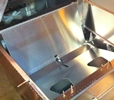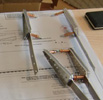


random user submitted photo
Verifying Engine RPM readings (Camera Method)
Forum rules
Lessons-learned submissions follow a standardized format designed to identify the issue, draw out the relevant factors and present useful guidance to others facing a similar situation. The submitter answers the following 5 questions:
1) What went wrong (or right), and why?
2) What were the shortcomings, and why did they exist?
3) What actions were taken to fix the problem?
4) What preventive actions should be taken into account for future efforts?
5) What overall recommendations should be made for future projects?
The length of the write-up and amount of detail presented are left up to each individual. Some lessons learned can be perfectly conveyed in a few simple sentences, while others will require much more. The goal is to be as clear and succinct as possible, not to generate literary masterpieces!
All posts submitted to this forum are held in a review queue for approval by a moderator. Information in the posts will be reviewed, vetted, and modified as needed before going public. Additionally, any replies that are submitted would also be reviewed to ensure they add value and remain on topic. This will avoid normal threat drift of general discussions.
Lessons-learned submissions follow a standardized format designed to identify the issue, draw out the relevant factors and present useful guidance to others facing a similar situation. The submitter answers the following 5 questions:
1) What went wrong (or right), and why?
2) What were the shortcomings, and why did they exist?
3) What actions were taken to fix the problem?
4) What preventive actions should be taken into account for future efforts?
5) What overall recommendations should be made for future projects?
The length of the write-up and amount of detail presented are left up to each individual. Some lessons learned can be perfectly conveyed in a few simple sentences, while others will require much more. The goal is to be as clear and succinct as possible, not to generate literary masterpieces!
All posts submitted to this forum are held in a review queue for approval by a moderator. Information in the posts will be reviewed, vetted, and modified as needed before going public. Additionally, any replies that are submitted would also be reviewed to ensure they add value and remain on topic. This will avoid normal threat drift of general discussions.
1 post
• Page 1 of 1
Verifying Engine RPM readings (Camera Method)
Most consumer grade cameras (including most phones, tablets, etc) record video in 60 frames per second. An interesting phenomenon that happens with footage taken with these cameras is either a reversal in the "apparent" motion of the propeller from clockwise to counter-clockwise (or vice versa), or a still image of the propeller altogether, when the propeller is at 1800 RPM. Since 1800 RPM lies easily within the range of most aircraft propellers, a verification check can be made with a camera that the tachometer is reading correctly. Obviously one would want to verify that the video being taken is actually at 60 frames per second with the camera device being used.
Ryan Roth
N197RR - Waiex #197 (Turbo Aerovee Taildragger)
Knoxville, TN (Hangar at KRKW)
My project blog: http://www.rynoth.com/wordpress/waiex/
Time-lapse video of my build: https://www.youtube.com/watch?v=Q8QTd2HoyAM
N197RR - Waiex #197 (Turbo Aerovee Taildragger)
Knoxville, TN (Hangar at KRKW)
My project blog: http://www.rynoth.com/wordpress/waiex/
Time-lapse video of my build: https://www.youtube.com/watch?v=Q8QTd2HoyAM
-

Rynoth - Posts: 1308
- Joined: Fri Jul 26, 2013 1:32 pm
- Location: Knoxville, TN
1 post
• Page 1 of 1
Who is online
Users browsing this forum: No registered users and 1 guest







